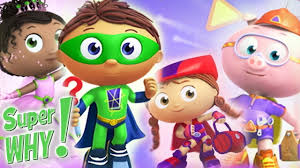In today’s digital age, children’s entertainment has evolved dramatically from the simple cartoons of yesteryear. Modern kids animated shows have become sophisticated vehicles for entertainment, education, and social development. These colorful, engaging programs capture children’s imaginations while often imparting valuable lessons and skills. As parents, educators, and caregivers, understanding the landscape of children’s animation helps us make informed choices about screen time quality.
The power of animation lies in its ability to create worlds unlimited by physical constraints, bringing fantastic stories to life through vibrant characters that resonate with young viewers. Quality educational cartoons combine entertainment with learning objectives, making them invaluable tools in a child’s developmental journey. Let’s explore the fascinating world of kids’ animated programming and discover what makes these shows so impactful.
The Evolution of Children’s Animation
From Saturday Morning Cartoons to Streaming Services
Remember the days of rushing to the television for Saturday morning cartoons? Those weekly rituals have transformed into on-demand viewing experiences. The evolution of children’s animation reflects broader technological and social changes.
In the early days of television, animated shows for children were primarily entertainment-focused with simple storylines and characters. Shows like “Looney Tunes” and “Tom and Jerry” dominated screens with slapstick humor and minimal educational content. As research on child development advanced, creators began incorporating more educational elements into entertaining packages.
The 1990s and early 2000s saw a boom in animation specifically designed to engage children while teaching fundamental concepts. Shows like “Blue’s Clues” pioneered interactive viewing experiences, while “Dora the Explorer” introduced language learning and problem-solving skills.
Today’s landscape offers unprecedented variety across multiple platforms. Streaming services have revolutionized how children consume content, with dedicated kids’ sections featuring original programming and classics alike. This shift has democratized access to diverse animated content from around the world, exposing children to different cultures and storytelling traditions.
Technological Advancements in Animation
The technical quality of children’s animation has undergone remarkable transformation. From hand-drawn cel animation to computer-generated imagery (CGI) and stop-motion, production values now rival feature films.
This technological evolution hasn’t just improved visual appeal—it’s expanded storytelling possibilities. Complex emotional narratives, nuanced character development, and sophisticated world-building have become hallmarks of modern children’s animation. Shows like “Avatar: The Last Airbender” demonstrate how animation can address complex themes while remaining accessible to younger viewers.
Educational Benefits of Quality Animated Content
Cognitive Development Through Animation
Well-designed animated shows stimulate multiple areas of cognitive development. Through carefully structured narratives and visual elements, these programs engage children’s attention while developing critical thinking skills.
Pattern recognition, cause-and-effect relationships, and sequential thinking are naturally reinforced through storytelling structures. When characters solve puzzles or overcome obstacles, children engage in hypothetical thinking alongside them. This cognitive engagement happens almost effortlessly because the entertaining format maintains motivation and interest.
Many shows incorporate age-appropriate academic content, from basic numeracy and literacy to more advanced concepts in science, geography, and history. The visual medium makes abstract concepts more concrete and accessible, helping children grasp ideas that might be challenging through traditional instruction.
Social-Emotional Learning
Perhaps the most significant contribution of modern animated programming is in the realm of social-emotional development. Today’s shows frequently feature diverse characters navigating complex relationships and emotions.
Through character-driven storylines, children witness models of empathy, conflict resolution, and emotional regulation. When characters express feelings, overcome challenges, or learn from mistakes, viewers gain valuable emotional vocabulary and problem-solving strategies they can apply in their own lives.
Shows like “Daniel Tiger’s Neighborhood” explicitly teach emotional intelligence through catchy songs and relatable scenarios, while others embed these lessons within engaging adventure narratives.
Selecting Quality Content for Different Age Groups
Preschool Programming (Ages 2-5)
The youngest viewers benefit from slow-paced, predictable shows with clear, simple narratives. Repetition is key for this age group, as it reinforces learning and provides a sense of mastery and comfort.
Ideal shows for preschoolers feature bright colors, friendly characters, and direct address (when characters “speak” to viewers). Interactive elements that encourage movement, singing, or responding to questions help maintain engagement while promoting active rather than passive viewing.
Look for programs that teach fundamental concepts like colors, shapes, numbers, and letters, alongside basic social skills like sharing, taking turns, and expressing feelings appropriately.
Elementary Age Content (Ages 6-11)
As children enter school age, their animation preferences and learning needs evolve. More complex narratives with developing story arcs become appropriate, along with humor that goes beyond simple physical comedy.
Shows for this age group often explore friendship dynamics, school experiences, and growing independence. Educational content can include more advanced concepts in science, history, and global awareness, while still maintaining an entertaining core.
Humor becomes more sophisticated, incorporating wordplay and situational comedy that challenges developing minds while keeping them engaged.
Representation and Diversity in Children’s Animation
The Importance of Inclusive Characters and Stories
Modern children’s animation increasingly reflects the diverse world children inhabit. Shows featuring characters from various cultural backgrounds, family structures, and ability levels help children see themselves represented while building understanding of others’ experiences.
This diversity extends beyond visual representation to include diverse perspectives and cultural traditions. When shows authentically incorporate elements from different cultures rather than relying on stereotypes, they become powerful tools for developing global citizenship and cultural appreciation.
Breaking Gender Stereotypes
Animation has made significant strides in challenging traditional gender roles and stereotypes. Modern shows often feature strong female protagonists, emotionally expressive male characters, and narratives that avoid limiting children to traditional gender expectations.
These progressive approaches help children develop healthy gender identity and relationships based on equality and respect rather than rigid stereotypical roles.
Balancing Screen Time and Content Quality
Setting Healthy Boundaries
While quality animated content offers numerous benefits, balance remains essential. Experts recommend age-appropriate limits on screen time, along with adult involvement in selecting and discussing content.
The American Academy of Pediatrics suggests children ages 2-5 should have no more than one hour of screen time daily, while older children need consistent limits that prioritize sleep, physical activity, and face-to-face interaction.
Co-Viewing and Discussion
When adults watch animated shows with children, they transform passive viewing into active learning experiences. Simple conversations about characters’ choices, feelings, and situations help children process content critically while strengthening family bonds.
Questions like “What would you do in that situation?” or “How do you think that character feels?” encourage deeper engagement and help children connect programming to their own experiences.
Conclusion
High-quality animated shows represent powerful tools for entertaining and educating young minds. The best examples combine engaging storytelling with age-appropriate learning objectives, helping children develop cognitively, socially, and emotionally.
As the animation landscape continues evolving, the thoughtful selection of content becomes increasingly important. By understanding what makes quality children’s animation effective and choosing shows that align with developmental needs and family values, we can help children benefit from the unique educational potential of animated programming.
Whether you’re a parent seeking weekend entertainment options, an educator incorporating media into classroom activities, or simply someone interested in the fascinating world of children’s animation, appreciating the craft and intention behind quality kids’ animated shows reveals their true value beyond mere entertainment.



